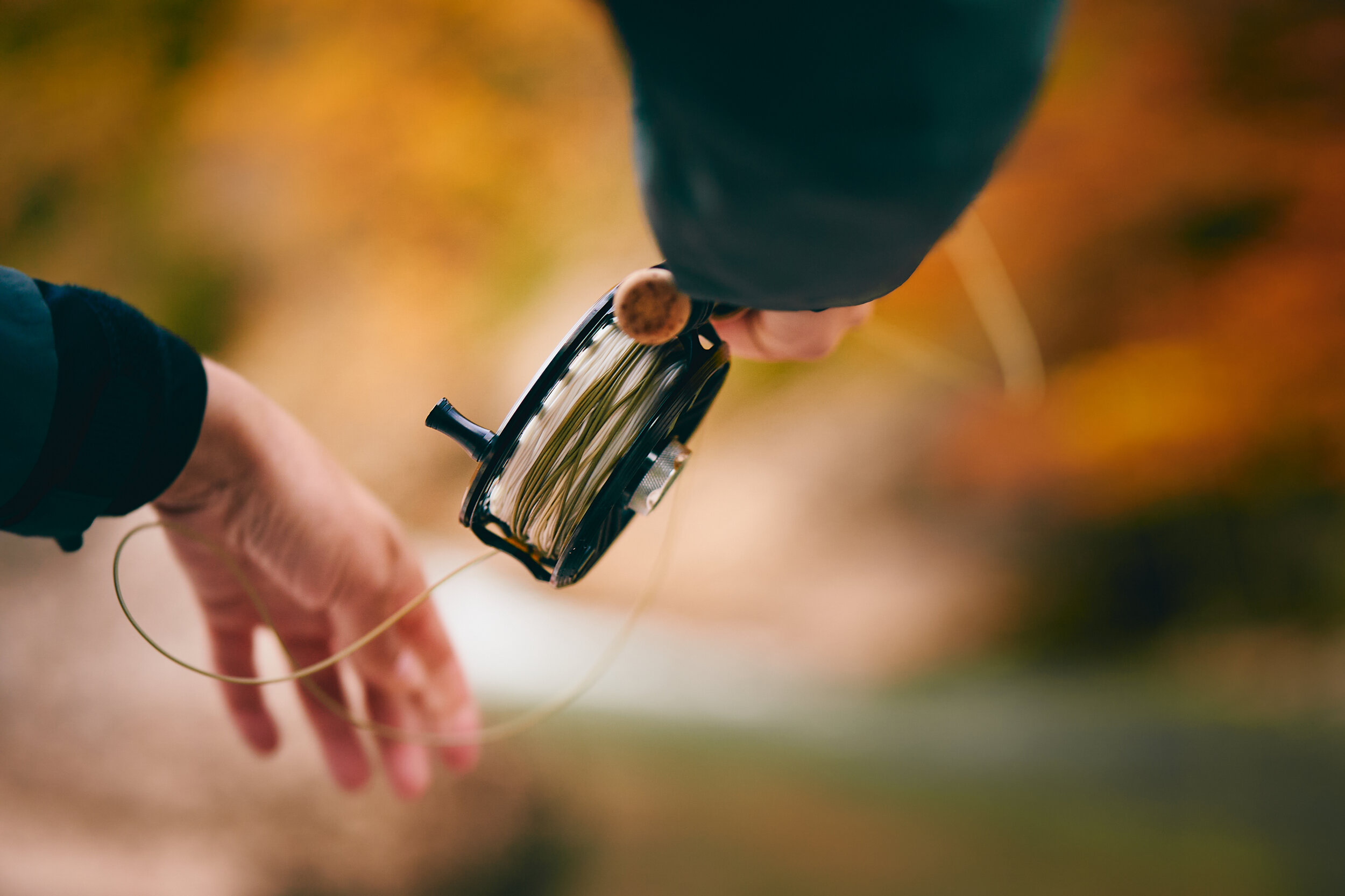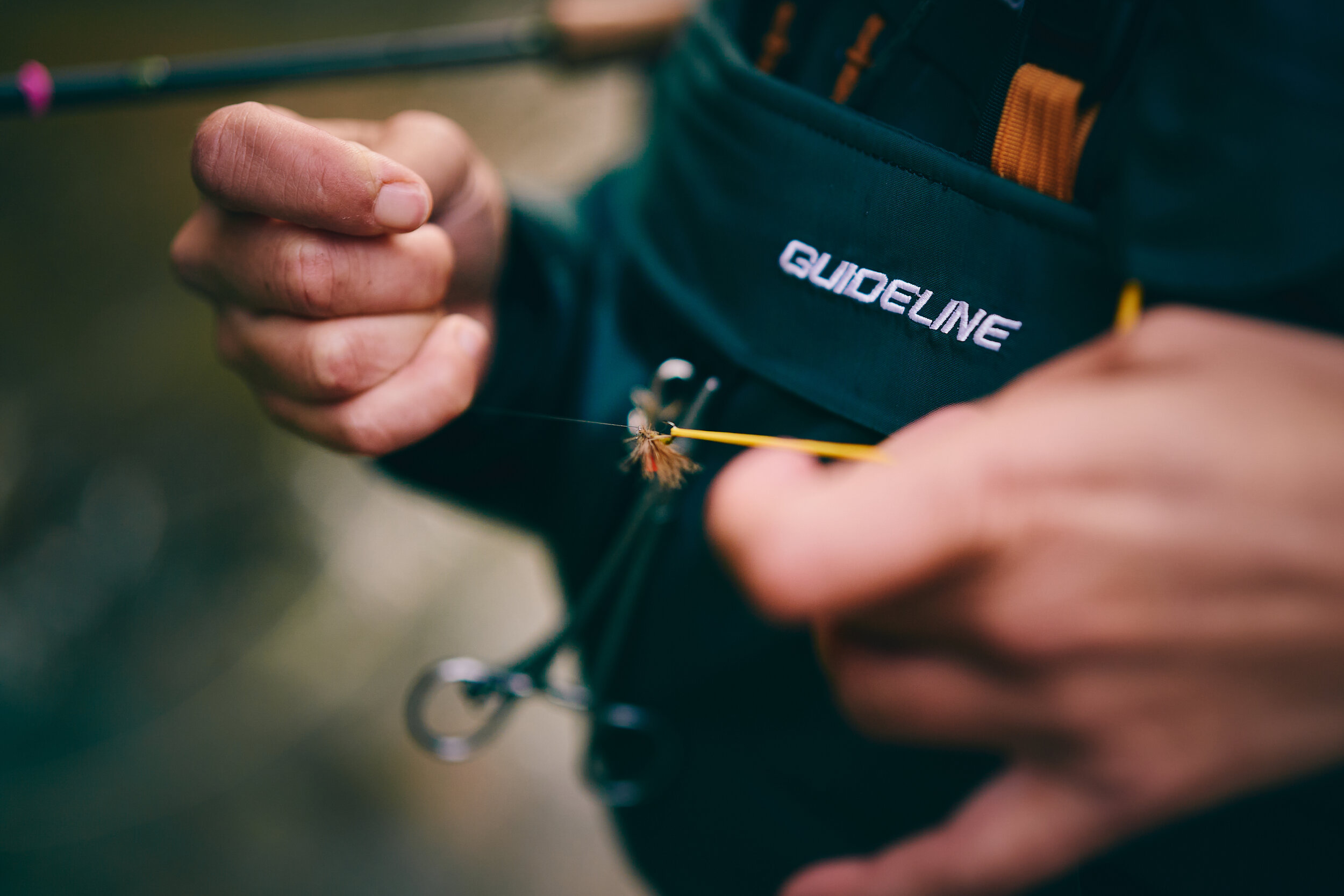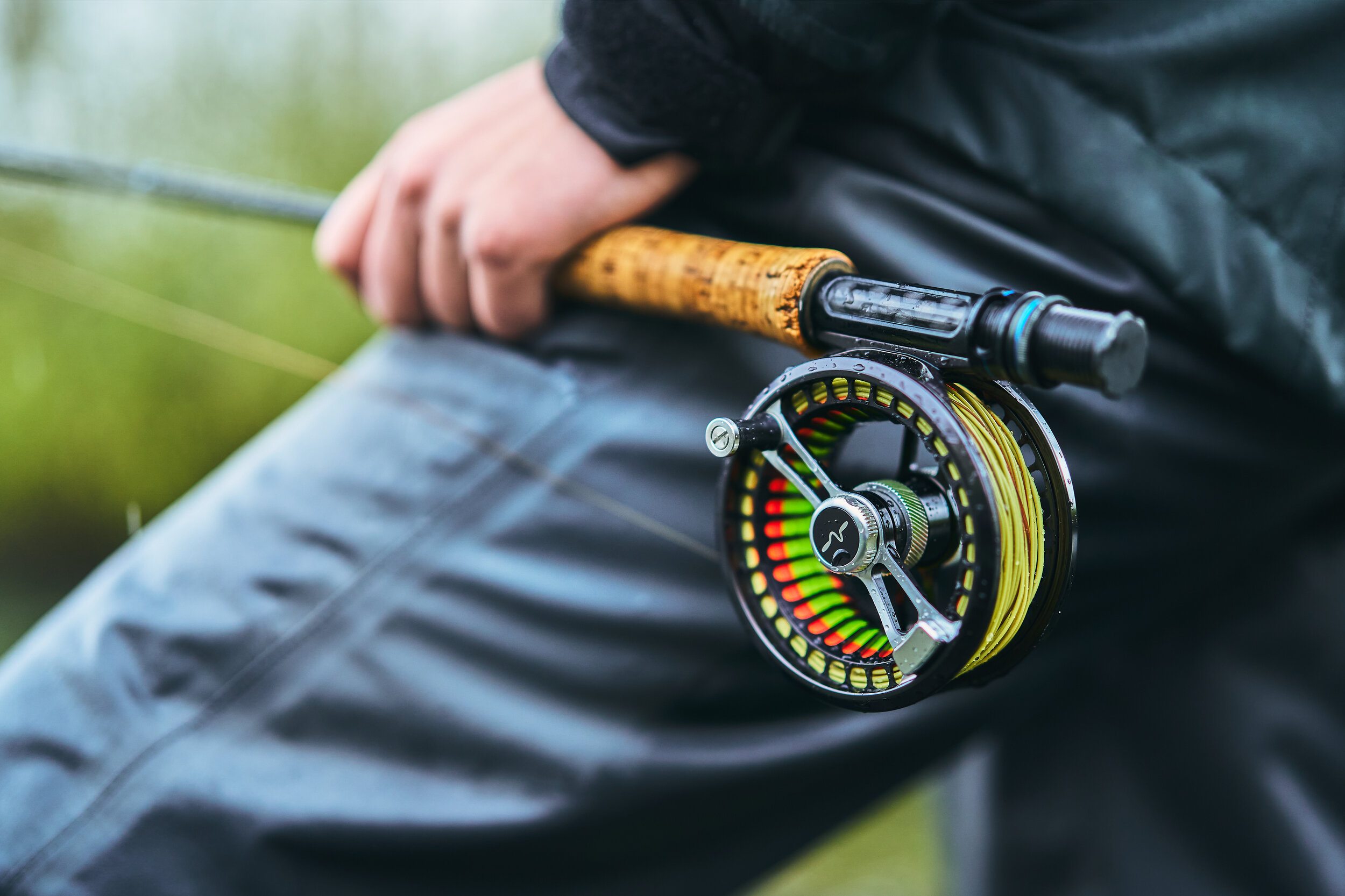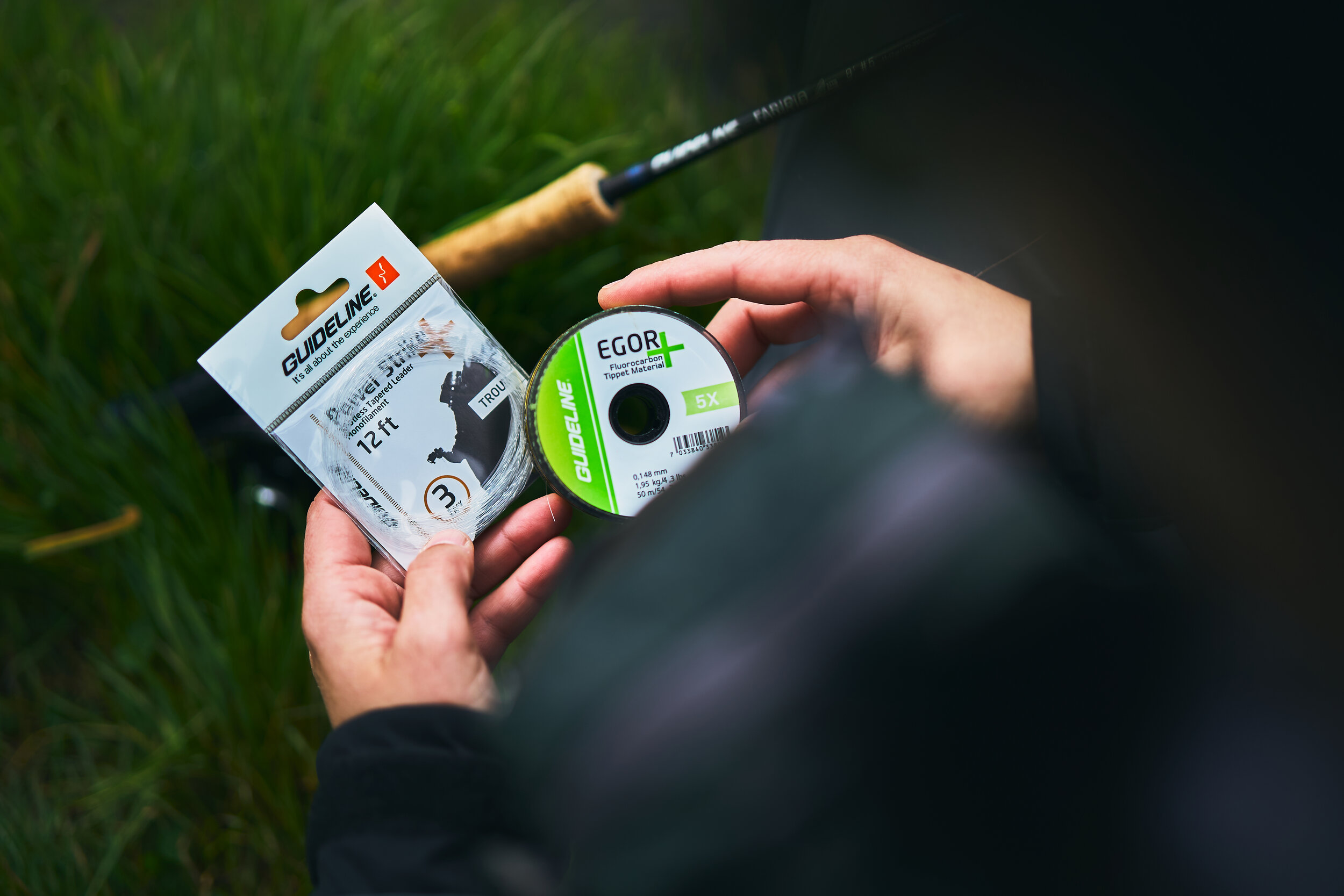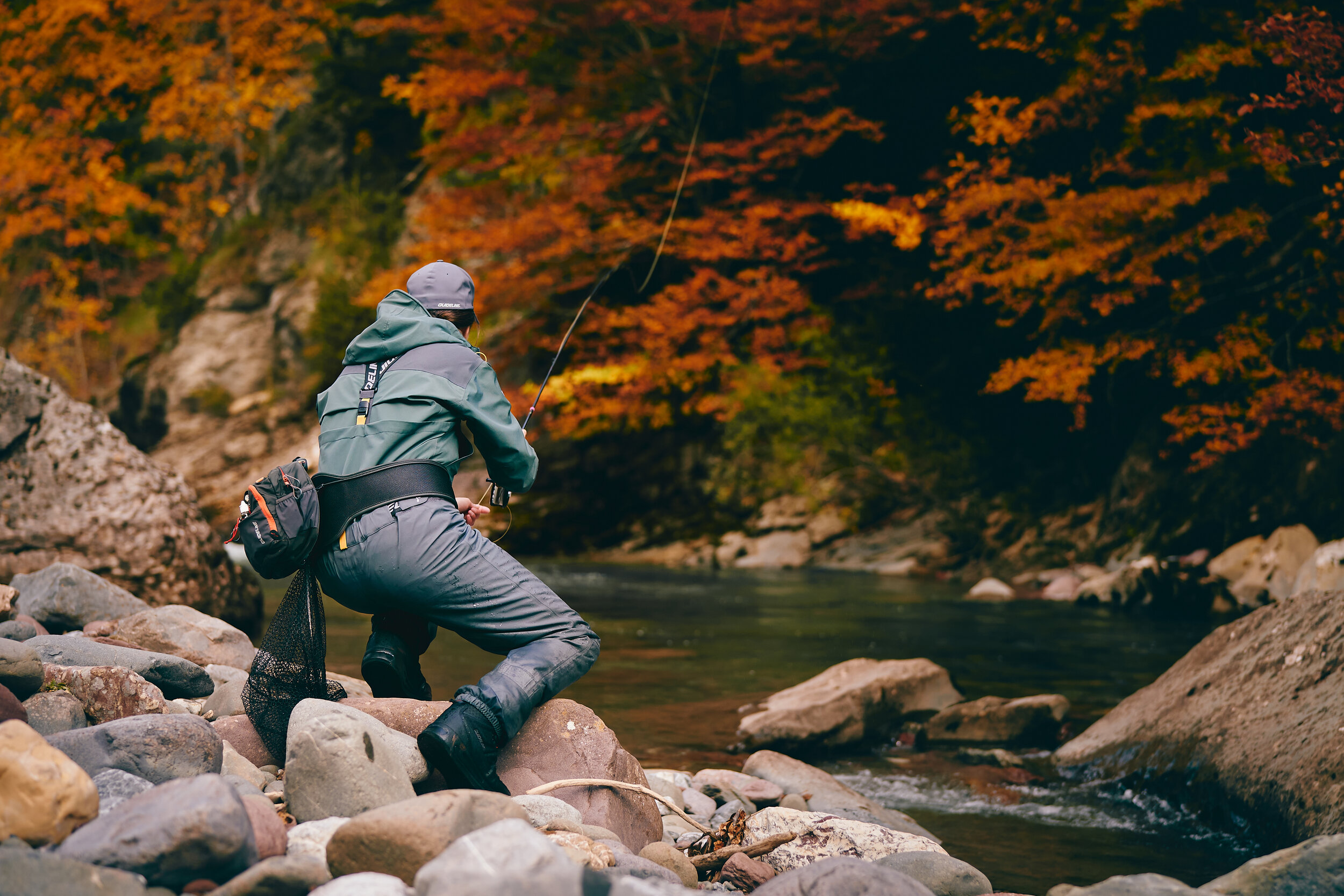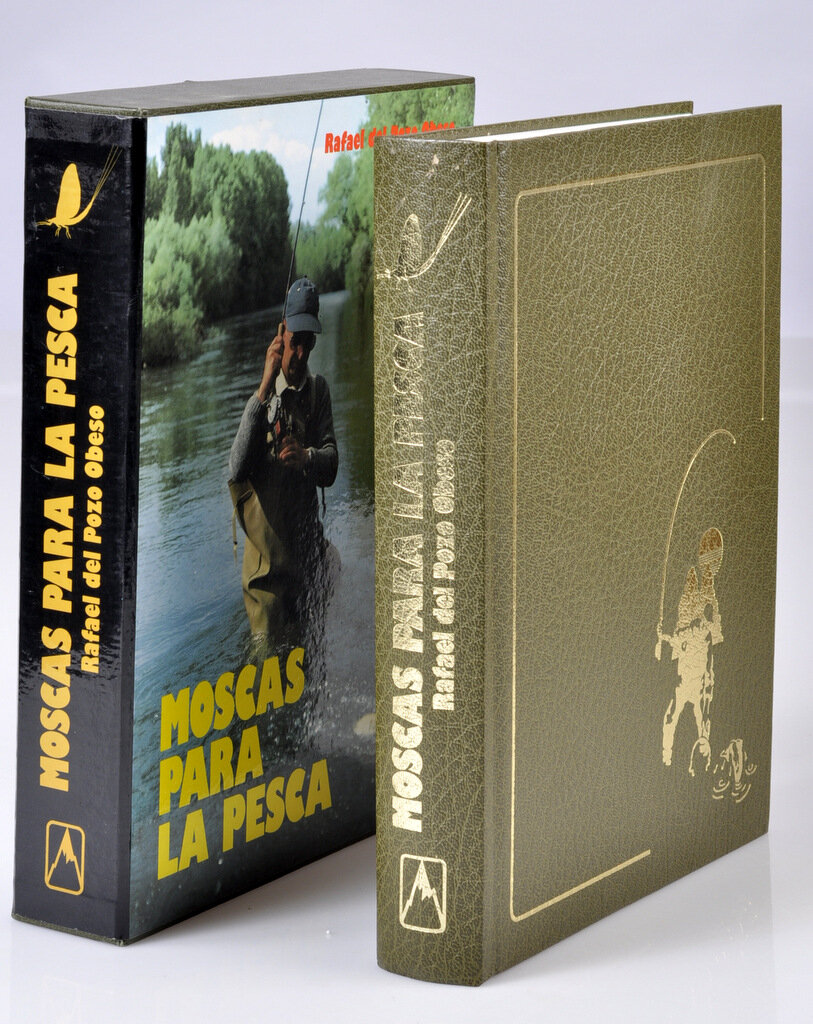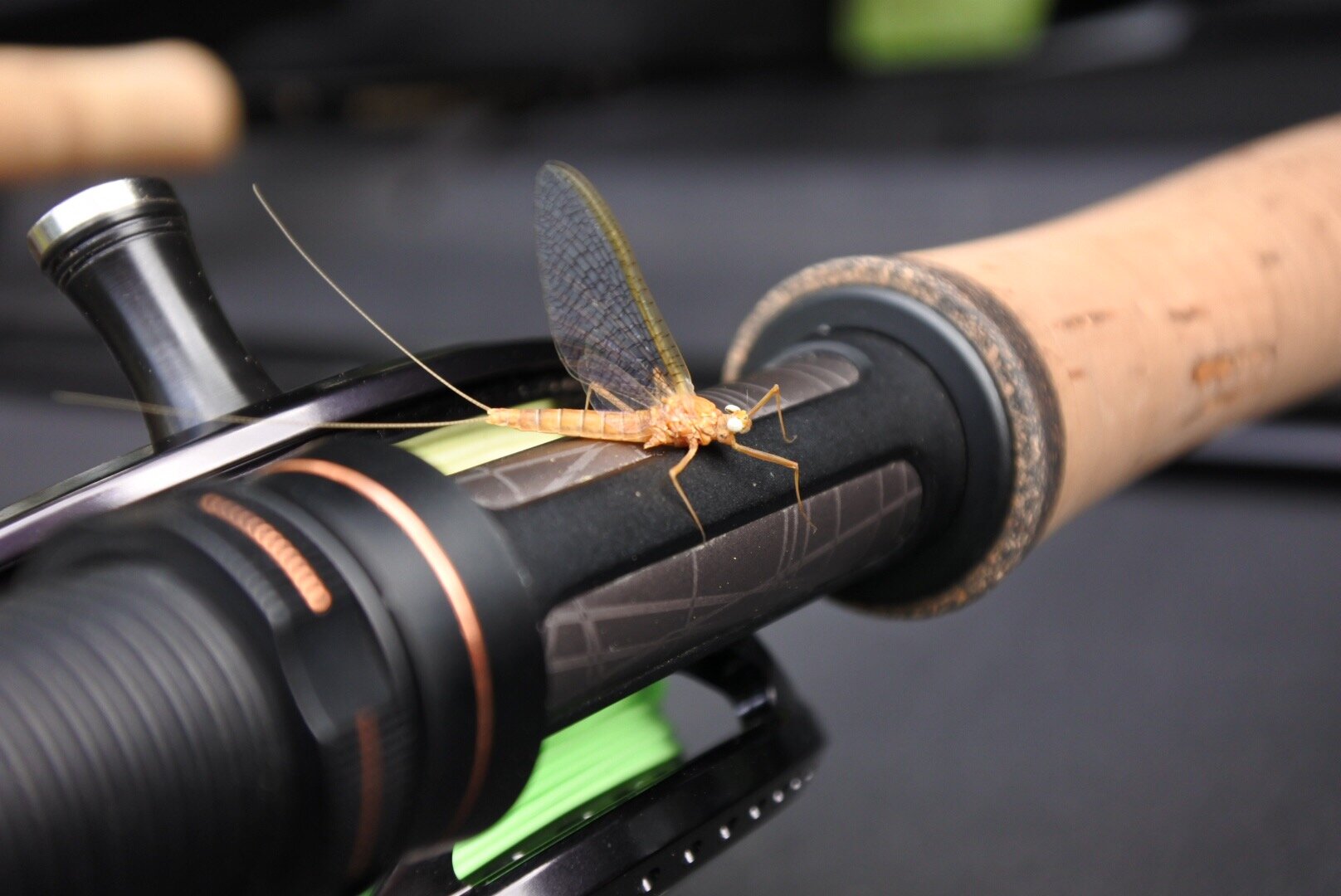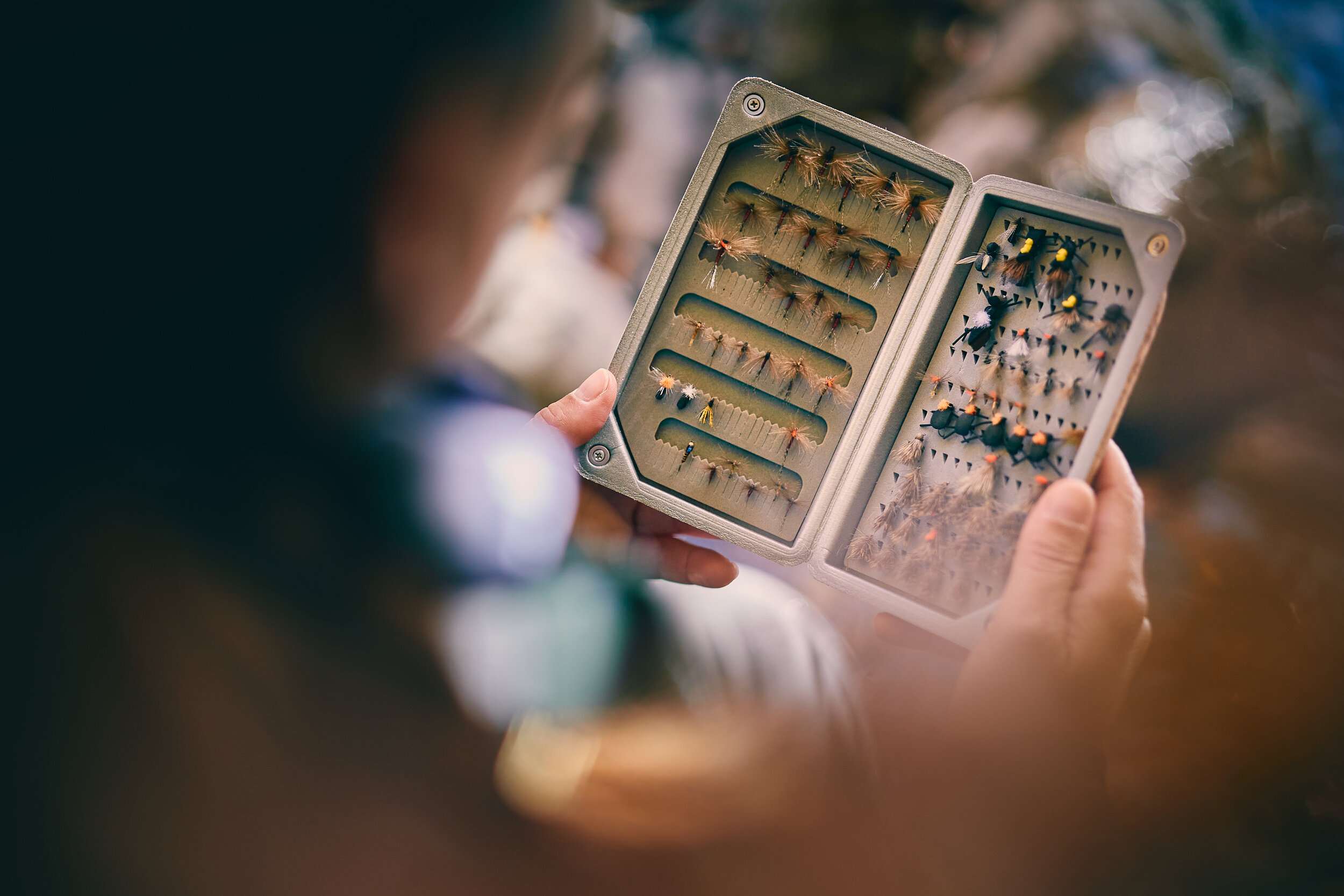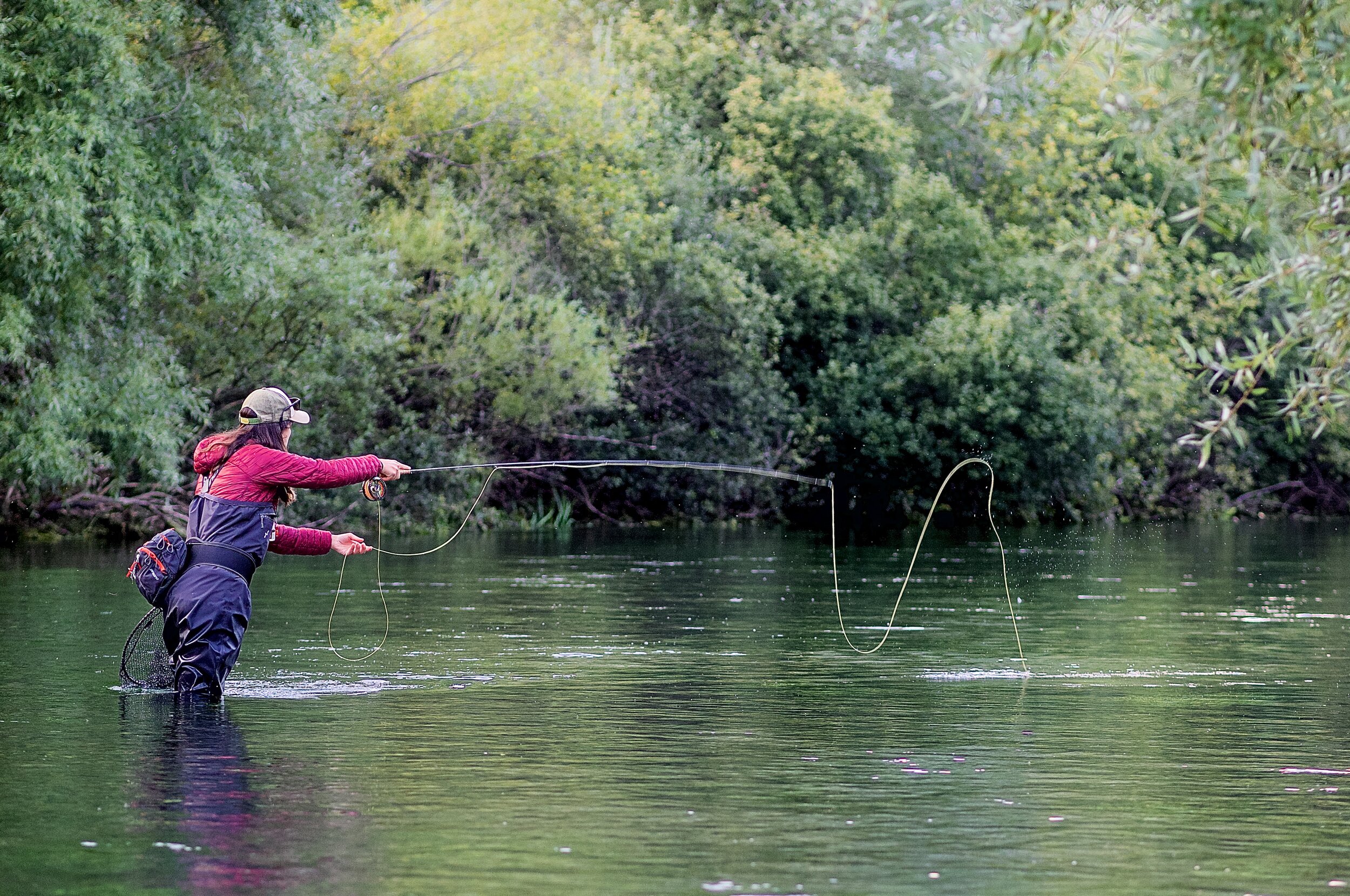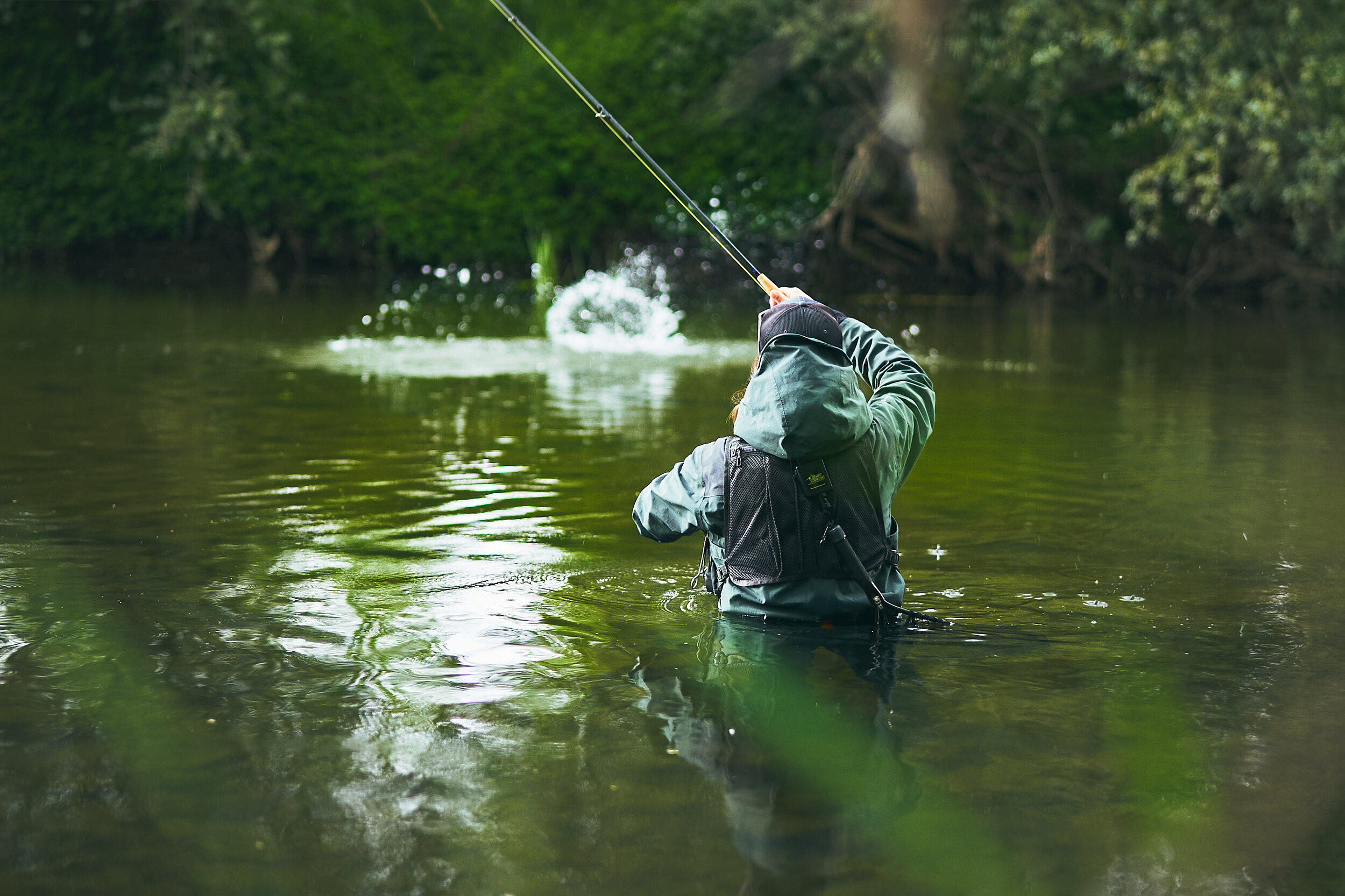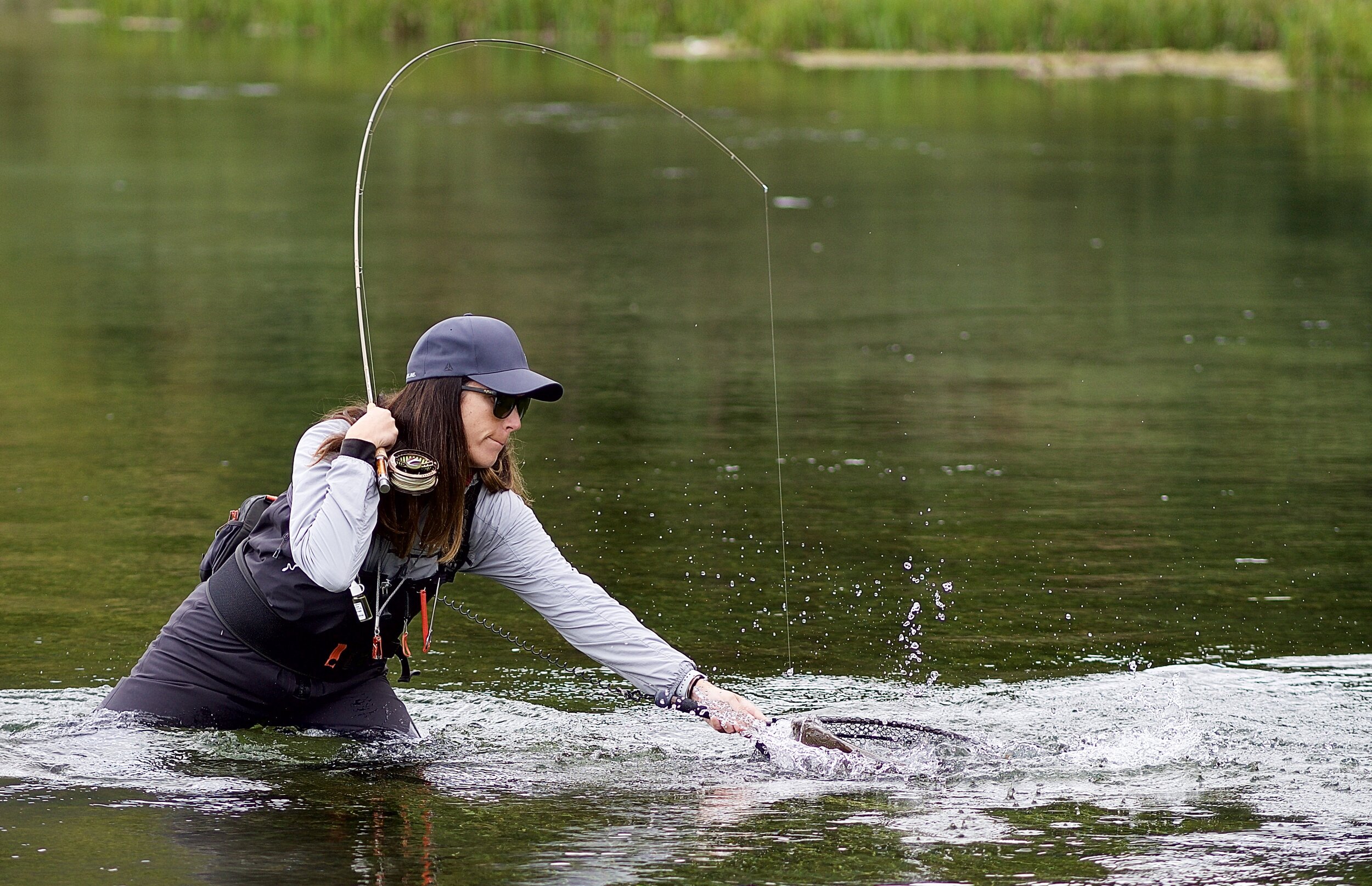
Miren Elosegui
Photos: Alvaro G Santillan Aitor Coterón
1. Choice of equipment Rods, reels, fly lines, fly floatants, clothes, glasses and other useful items.
I like to fly fish with ultralight equipment. I am always looking for the maximum lightness and confort so as not to become exhausted after a long fly fishing day.
I normally use 9’ #3, 4 or 5 rods depending on the river I have chosen and of course, the size of its trout. I must admit that I did not use the 9’ #5 rods, except when I went to the Tormes river in Spain (where the size of the trouts is amazing), because I finished worn out. Now my Guideline Fario NT8 9’ #5 rod allows me to cast during hours and hours without getting tired, so since I have it, I use it more often.
If we talk about reels, the concept is the same. I use high-quality ones with the minimum weight. I normally choose reels with a fewer # than the line I will use, just with the aim of economizing a few grams. For example, in my Guideline Fario LW #2-4 reel, I use #5 lines without any problem. I only have to limit the backing metres and this is not an inconvenient with the Spanish trouts because we hardly ever will need the backing in the fighting.
Regarding lines, I love lines with short head lengths, that is, not exceeding the 10 metres, which allow me to stretch long leaders using only the first metres of my line. The rivers I usually visit here in Spain are narrow, and without a breath of wind and with extremely selective trout in their waters. This is why I need to use long leaders 20 feet and sometimes longer. With the power concentrated in the first metres of the fly line this enables me to stretch and turnover my leader and to get the accuracy that is required in these special circumstances.
Apart from this, I usually wear light and comfortable clothes. Nowadays, we can easily find items specially designed for fly fishing women and that is a major step because men’s and women’s bodies are different.
I must confess that I am extremely sensitive to the cold, so I use polar clothes and primaloft garments till the beginning of the summer. And of course, a pair of high-quality merino socks during all the fly fishing season.
And what about bags and packs? From my point of view, the best solution does not exist. We must adapt our needs to the different possibilities we can find on the market. I use the Guideline Experience waistbag and the Experience DW vest depending on the wading depth. I fill them with foam fly boxes, a good pair of forceps, a nipper and the CDC oil to put on my dry flies.
And last but not least, I try to protect my eyes and my skin from the UV radiation with a pair of high-quality sun glasses and a SPF 50+ sunscreen. Please, try not to economize in this aspect! I use high transmission lens which offers extra contrast and colour to spot the fish even in low light conditions and to assure the best protection to my eyes from the exposure to the sun’s rays. My favorite ones? Without any doubt, the Maui HT or the HCL Bronze lens from Maui Jim.
2. Leader material, build up, length and knots.
I always use 9’ 3X conic nylon leaders with a tippet ring in their end. I connect there, in a compensated way, different nylon segments in descending diameter and length depending on the atmospherical conditions and the narrowness of the river. Then I connect a fluorocarbon tippet. A long fluorocarbon tippet I would say. This will help me to slow down the appearance of the feared drag. If you ask me about brands, I normally use the Guideline Egor+ fluorocarbon in 5X or 6X and the Seaguar Grand Max Ayu in lower sizes.
The first thing I do before starting to fish is to apply a thin layer of the Marc Petitjean leader floatant to my leader (except the tippet) and to the first 3 metres of my line. That allows me to make discreet mendings and silent lifts. I highly recommend it.
Talking about knots, I utilise the “Davy Knot” to tie my fly and the “Blood knot” between the leader segments.
I must say that I search above all for a feeling of softness and connection along all my system (line-leader-tippet), so I avoid the loop-to-loop connection between the line and the leader during dry fly fishing. Instead of it, I connect them using the TMC line splicing kit. It looks more streamlined.
3. Approach and stealth.
I am mainly a dry fly angler. That is my passion! I need to see the reactions of the fish. Unfortunately, they do not feed on surface all day, and in those other moments I have to “hunt” them. That is what we know as sight fishing. The aim is to spot a fish without being detected, because although the fish is not in an active stage, we can try to stimulate it with a dry fly or even with a micro nymph. Therefore it is very important to make slow movements and to move stealthily through the river. If it is possible, it is preferable to walk along the river bank without touching the water with our polarized sun glasses and our seven senses on. I know a lot of experienced anglers who confess that nowadays they catch more trophy fish than years before because now they wade more slowly. When they were young, they wanted to run and they would scare away all the animals they found on their way.
In case the fishes are rising, I attempt to get the most lateral position I can (without being detected) just because sometimes, if you are situated behind the fish and it takes your fly, its mouth will firstly come across with the tippet causing errors and probably scaring the fish. In order to be as successful as possible, our fly should be the first thing to reach the mouth the fish, not the tippet. In this sense, fishing downstream could be a useful technique.
4. Reading the water.
As I said before, the fishing I practice is based on spotting fish or rises. Parameters such as water temperature, water level, the rivers where we can find the desirable hatches depending on the month of the season or the hours where these hatches take place, will define the position where the fish are. A good knowledge of all these elements is not a task we can learn easily, it is an instinctive behavior instead. I know anglers who were born with it and as a consequence, I have seen them catching a fish where I would never have imagined. However, nothing is impossible. Just hours and hours in the river are needed.
5. Casting ability; which casts are essential ?
Effectively, being able to read the water is quite instinctive. On the contrary, having a good casting technique is something that is in our hands. Undoubtedly, it is an exceptional tool. In my opinion, the fly casting techniques are conceived with two aims: to be able to put our fly exactly wherever we want and to avoid drag.
Pile cast, reach casts and curves mends are the cast I use the most in order to avoid drag.
Spey, backhand cast, distance and accuracy are part of my usual training sessions too.
I think that it was the beauty of a loop unrolling in the air which enchanted me from the start. Honestly, the most important thing in fly fishing for me is “how” we catch the fish. This is what differs fly fishing from the other fishing techniques. You have to do it properly and in a beautiful way. To get it, practice makes perfect.
In Jason Borger’s words: “Fly fishing is actually supposed to be fun(…) and it’s practice that is key to making fly-fishing fun a full-time reality.” (Borger J. “Single handed fly-casting”).
6. Entomology, what should we know.
I must admit that I am a little inexperienced in this complex field, but at the same time, I really think that having a few basic entomology concepts clear, it is enough to fish properly. No matter how hard you try in front of your vise, your flies will never have the same shape as a natural insect and even so, fishes will eat them.
Two years ago, a friend of mine gave me as a gift the fantastic book “Moscas para la Pesca” from Rafael del Pozo Obeso.
I recognize that it is an amazing subject and too difficult as well. But despite my inexperience, fortunately I always find a suitable imitation in my fly boxes to face any situation!
7. Rise forms. Can they tell us something?
Yes, without any doubt. It is very important to observe them in detail. I always spend a few minutes analyzing each rise before presenting my fly to a trout. It is a valuable information we can use if we deal with a selective fish. It is better to invest some time observing its behavior, instead of being in a hurry and as result, place an inappropriate fly causing an increase in its level of alertness.
Rises will give us the information we need about the type of insect the fish is eating and its stadium so as to be ready to make a first and unique winner cast.
I will never forget the first day I saw a trout feeding to caddis. I could not understand the violence of its rises while it refused my mayflies again and again. However, I was very lucky because when I realized what was happening, the fish gave me another opportunity (that does not happen everyday) and after changing my fly to a suitable one, I was able to catch the trout.
Emergers, subimagos, micropatterns or spents, all of them are taken in different ways and the rise forms reveal us important details. The experience and the hours in the river help us to identify each one.
8. Fly selection, size, shape, materials, which flies are essential, favourite fly.
I have only a pair of medium fly boxes. There are neither thousand colours nor thousand sizes or patterns inside. You can find there mostly mayflies from #20 to #14 size in different olive, red and brown tonalities and stadiums, a few MP81 in #12 and #10 sizes, caddis from #18 to #14 size and finally, micropatterns in #24 and #22 sizes.
I also like beetles and ants in foam, they have given me a lot of satisfactions when I least expected it. And the micro nymphs, of course! The more I practise sight fishing, the more I enjoy it. It is a way of fly fishing only suitable for people with a healthy heart!
In short, I think that a fly must be appropriately tied (that means using just the right amount of material and from the best quality too) and it must be well-balanced, but we have to take into account that a fish will not take the best tied fly in the world, if it has not been correctly presented.
9. Presentation and drifts.
All our efforts should be directed to get a perfect drift while practising dry fly fishing or nymphing. That is why a rich fly casting technique, a good control of the different mendings and the use of a long leader seem to me basic. All of this can be trained and then adjusted to the real fishing in the river.
10. Upstream or downstream?
I must say that I have always been an upstream angler. Maybe because in Spain it is too difficult to see somebody fishing downstream. I think is an unshakable and inherited habit founded on the belief that a fish is going to be scared, if we approach it head-on. But all of this is simply a custom.
I have travelled recently to Bosnia with my friend Aitor Coterón, and thanks to him, I was able to realize the effectiveness of downstream technique. It is a good way to avoid drag and to obtain longer drifts. Since that fly fishing trip, I must admit that I practise it frequently. Please, open your mind and do not be swayed by nonsense traditions!
11. Fighting fish.
Fighting fish should be as short as possible in order too release the fish after in the best possible condition. In Spain, #2 equipments and 7X or lower tippets have become too popular due to the influence of the competition. As a consequence, it is not strange to see anglers in a difficult situation fighting a small fish to long.
From my point of view, our equipment should be the most suitable for the size of the fish we intend to stalk. This together with a resistant tippet and an angle in our rod applying all possible pressure will shorten the fight and get the fish away from its refuge. Finally, a good silicone landing-net will allow us to unhook the fish properly.
